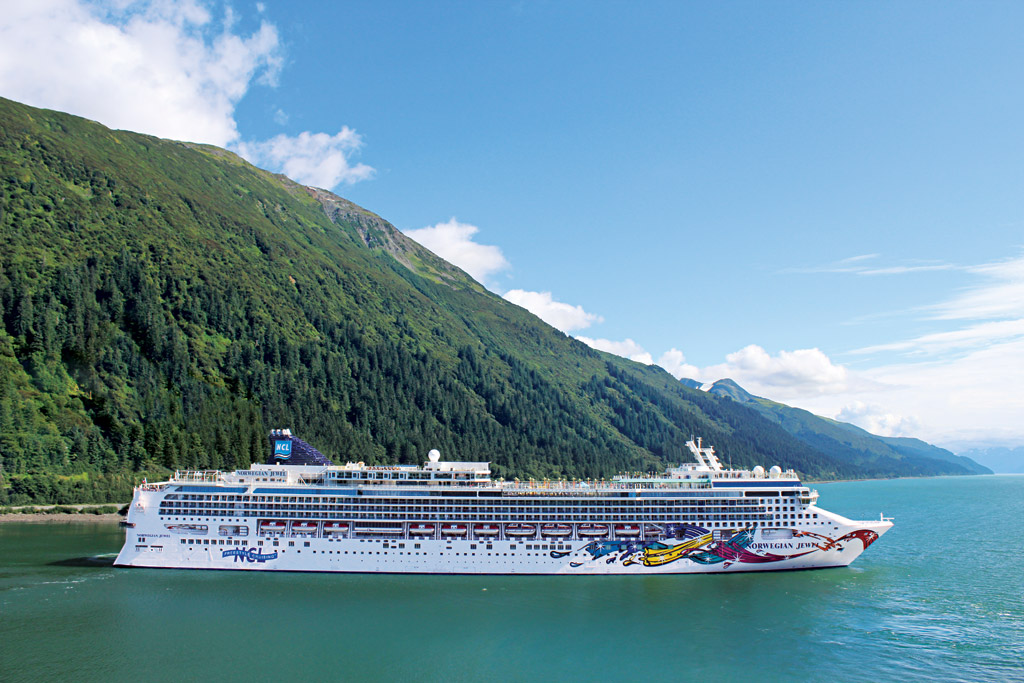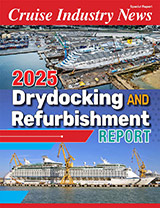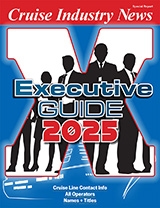Norwegian Cruise Line Holding today reported financial results for the second quarter ended June 30, 2021 and provided a business update.
“Last week we reached a historic milestone in our Great Cruise Comeback with the successful commencement of our relaunch with the first ship in our fleet, Norwegian Jade, sailing the Greek Isles. Tomorrow will mark our first cruise in the United States in over 500 days as Norwegian Encore sets sail from Seattle to Alaska,” said Frank Del Rio, president and chief executive officer of Norwegian Cruise Line Holdings.
The company expects to have approximately 40% of its fleet capacity operating by the end of the third quarter 2021 and approximately 75% by year-end 2021 with the full fleet expected to be back in operation by April 1, 2022.
“As we recommence operations, we are putting health and safety at the forefront with our robust, science-backed SailSAFE health and safety program, including our 100% vaccination policy which applies across all voyages on our three brands. We are ready and eager to welcome guests back onboard and continue to see incredible strength in our booking trends for future cruises. Our team is working tirelessly to execute on our plan to return our full fleet to operation by April 2022 to capitalize on this unparalleled pent-up demand.”
Bookings continue to be strong for future periods despite reduced sales and marketing investments and a travel agency industry that has not been at full strength since the start of the pandemic, according to the company’s second quarter earnings press release.
2022 booking and pricing trends continue to be very positive driven by strong pent-up demand. The company said it is experiencing robust future demand across all brands with the overall cumulative booked position for full year 2022 meaningfully ahead of 2019’s record levels at higher pricing even when including the dilutive impact of future cruise credits (“FCCs”).
The company’s advance ticket sales were $1.4 billion, including the long-term portion, which includes approximately $800 million of FCCs as of June 30, 2021.
The company’s monthly average cash burn for the second quarter 2021 was approximately $200 million, higher than prior guidance of approximately $190 million and above the prior quarter, as it prepared for a return to service this summer. Looking ahead, the company expects third quarter 2021 monthly average cash burn to increase to approximately $285 million driven by the continued phased relaunch of additional vessels, according to a press release.
This cash burn rate does not include expected cash inflows from new and existing bookings.
“We are focused on the flawless execution of our return to service plan including the phased relaunch of all 28 of our vessels by April 2022 which is the first step on our road to recovery,” said Mark A. Kempa, executive vice president and chief financial officer of Norwegian Cruise Line Holdings. “Recognizing that the global public health environment remains fluid, we continue to focus on controlling costs, balancing our cash needs and enhancing our liquidity position to maintain financial flexibility.”
For the second quarter, GAAP net loss was $(717.8) million or EPS of $(1.94) compared to net loss of $(715.2) million or EPS of $(2.99) in the prior year. The company reported Adjusted Net Loss of $(714.7) million or Adjusted EPS of $(1.93) in 2021 which included $3.1 million of net adjustments. This compares to Adjusted Net Loss and Adjusted EPS of $(666.4) million and $(2.78), respectively, in 2020.
Revenue decreased to $4.4 million compared to $16.9 million in 2020 as voyages were once again suspended for the entire quarter.
Total cruise operating expense decreased 17.2% in 2021 compared to 2020. In 2021, cruise operating expenses were primarily related to crew costs, including salaries, food and other travel costs, fuel, and other ongoing costs such as insurance and ship maintenance.
Fuel price per metric ton, net of hedges increased to $673 from $594 in 2020. The company reported fuel expense of $54.1 million in the period.
Interest expense, net was $137.3 million in 2021 compared to $114.5 million in 2020. The increase in interest expense reflects additional debt outstanding at higher interest rates, partially offset by lower LIBOR. Included in 2020 were losses on extinguishment of debt and debt modification costs of $21.2 million.
Other income (expense), net was income of $25.5 million in 2021 compared to expense of $(14.4) million in 2020. In 2021, the income primarily related to gains on fuel swaps not designated as hedges.




